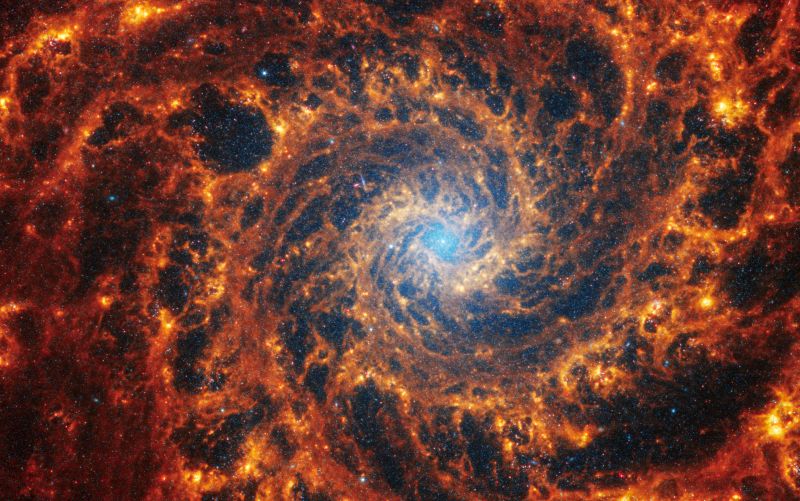
Unveiling the Brightest Object in the Universe: The Astonishing Quasar

Exploring the remarkable discovery of the brightest known object in the universe, powered by the fastest-growing black hole ever recorded.
The Enigmatic Quasar: A Cosmic Marvel
Deep within the vast expanse of space lies a celestial spectacle like no other - the quasar, a luminous entity that defies the boundaries of brilliance. Recent research has unveiled the brightest object in the universe, a quasar fueled by the fastest-growing black hole ever documented. Initially masquerading as a mere star, this cosmic phenomenon evaded detection until its grand reveal, leaving astronomers in awe of its radiant majesty.
This illustration shows a distant galaxy with an active quasar at its center. A quasar emits exceptionally large amounts of energy generated by a supermassive black hole fueled by infalling matter. Using the unique capabilities of Hubble, astronomers have discovered that blistering radiation pressure from the vicinity of the black hole pushes material away from the galaxy's center at a fraction of the speed of light. The "quasar winds" are propelling hundreds of solar masses of material each year. This affects the entire galaxy as the material snowplows into surrounding gas and dust.
Quasars, the radiant cores of ancient galaxies, stand as beacons of light in the cosmic darkness. Scientists speculate that these dazzling entities draw their luminosity from supermassive black holes, the celestial powerhouses at the heart of galaxies. The discovery of quasar J0529-4351, observed using cutting-edge telescopic technology, has shed light on a distant object whose brilliance has traveled billions of years to reach our humble corner of the universe.
An image of the quasar's location was created using data from the Digitized Sky Survey 2, while the inset was provided by the Dark Energy Survey.
The Mighty Black Hole: A Cosmic Devourer
Black holes, enigmatic entities of immense gravitational influence, serve as the driving force behind the luminous spectacle of quasars. These cosmic behemoths exhibit a voracious appetite for matter, consuming stellar masses with unparalleled ferocity. The accretion disk surrounding a black hole, a maelstrom of energy and light, bears witness to the cosmic ballet of matter spiraling into the dark heart of the celestial giant.
This Webb image shows a densely populated spiral galaxy anchored by a central region that has a light blue haze, known NGC 628. It's 32 million light-years away in the constellation Pisces.
The black hole powering quasar J0529-4351 devours stellar material at a staggering rate, equivalent to the mass of a sun each day. With a mass surpassing 17 billion times that of our sun, this cosmic devourer emits a luminosity that outshines even the brightest stars in the universe. The profound implications of this discovery reverberate through the realms of astrophysics, offering insights into the nature of cosmic evolution and the origins of galaxies.
Unraveling Cosmic Mysteries: The Quest for Knowledge
As astronomers peer into the depths of space, the luminous glow of quasars illuminates the path to understanding the early universe. The discovery of quasar J0529-4351 heralds a new era of exploration, where distant supermassive black holes hold the key to unlocking the secrets of cosmic evolution. With advancements in observational technology on the horizon, scientists are poised to delve deeper into the enigmatic realms of space, unraveling the mysteries that have captivated humanity for eons.
The pursuit of knowledge in the cosmos is a relentless quest, driven by the insatiable curiosity of the human spirit. From the blinding radiance of quasars to the gravitational dance of black holes, each discovery opens a gateway to new horizons of understanding. As we gaze upon the brilliance of the universe's brightest object, we are reminded of the boundless wonders that await us in the infinite expanse of space.









